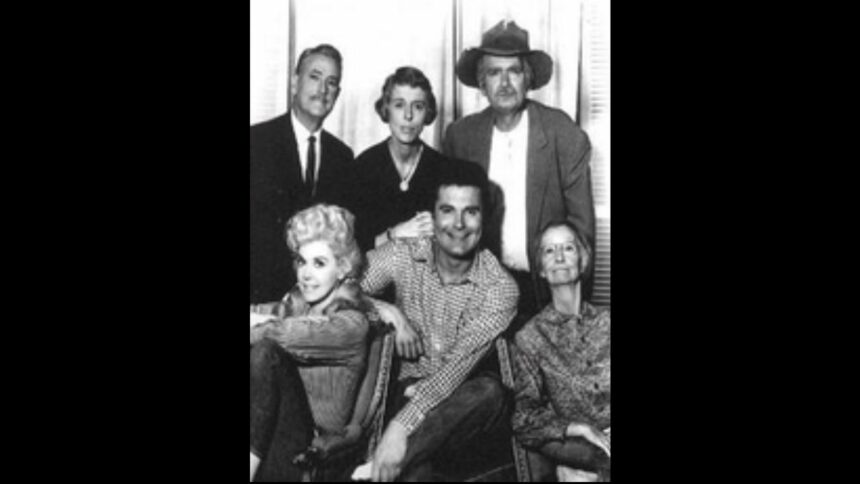Ever wondered how a person’s life becomes a footnote in someone else’s story? Enter Gaby Aida George. She was a woman from somewhere beyond the borders of the U.S.—details hazy, no thanks to history’s selective lens. Born in 1914, this woman became irrevocably tied to Raymond Bailey, a name more recognized among lovers of mid-20th-century cinema and television.
Picture it: 1951, Manhattan—a city always anxious to marry the old with the new. It’s here that Gaby George’s life intersects with Bailey’s. A dynamic point that thrusts her into the public’s peripheral vision. But who was she beyond that title, Mrs. Raymond Bailey? As it turns out, that’s a puzzle with more missing pieces than a dollar-store jigsaw, but let’s work through what we’ve got.
Early Life and Immigration
The year is 1914. Born in a country not documented in prominent narratives, Gaby Aida George made her grand debut into the world. Here’s the kicker—her transition across continents is mentioned in the briefest whispers, with little to no fanfare. A simple act of moving, yet one that would set the stage for the rest of her life.
She ended up in the United States—no small feat, given the times. Her journey into the U.S. remains shrouded in mystery, but like so many migrants, the journey was presumably filled with both uncertainty and hope. She sought new soil that would eventually see her settle stateside permanently. One has to wonder, did she clutch mementos of her past home, or did she move with little more than dreams-of-what-could-be?
Marriage to Raymond Bailey
Jump ahead to 1951 in the bustling heart of Manhattan. This is where Gaby ties the knot with Raymond Bailey. The world saw them through the lens of Raymond’s career, the familiar face of an actor who would later cement his name through myriad dramatic and comedic roles. But here’s where our curiosity peaks—what was their private Manhattan moment like without all the glitz and glamour?
Bailey’s career was a parade of characters and storylines, but what was Gaby’s role in the behind-the-scenes of this public spectacle? Ray was the star but every actor needs an audience—and from all accounts, Gaby played that part exquisitely, supporting and enduring a life lived partly in tabloids and television screens.
Life in the United States
Naturalized at 55—if the U.S. citizenship test wasn’t intimidating then, imagine tackling it after a lifetime of already navigating a foreign world. Yet, Gaby Aida George did it, officially becoming an American citizen. A move that underscores her commitment to the life she’d staked out in the States—a land that isn’t always the easiest nut to crack.
Living under the shadow, or rather the limelight, cast by her husband, Gaby put on a brave face as the wife of a man celebrated in Hollywood but scrutinized by the public. The life and times they lived stayed mostly theirs—a personal affair overlapping into the public eye whenever the flashbulbs demanded. Her life had its own rhythm, largely undocumented, woven quietly into Bailey’s louder symphony.
Legacy and Passing
And then 1985 arrived, a year marked by the passing of Gaby Aida George. With her departure, those few threads of her individuality tied to Bailey’s became history. Her legacy lives mainly through the very persona she supported—a testament, perhaps, to the eras and exigencies of measurement by association rather than individual achievement.
As those who knew her reflected on her life, did they see more than the narrative often overshadowed; an expatriate woman who supported a household that fancied the arts? Her identity stretched beyond her affiliations, a tale unsung by many but whispered by those who paid mindful homage.
Limited Details Beyond Marriage
A shoe left dangling suggests a dancer we may never see. That’s how Gaby’s achievements feel—lost in time or not publicized with the bold ink afforded to Bailey. There’s very little evidence of her steps taken apart from Bailey’s stride, somewhat expected given the societal norms of the era.
Speculation surrounds her like loose leaves—was she content just to play a supporting role, or were there pursuits eclipsed by her spouse’s fame? We can’t help but wish for more clues or at least a postscript revealing an independent exploit or two. Alas, history tends to scribble names before the page is turned.
Conclusion
In weaving the sparse strands of Gaby Aida George’s life, this much is clear—she was more than just Mrs. Raymond Bailey, though that’s the badge history permitted. From a foreign land to U.S. shores, she crafted a life that, even in its brevity, paints an intriguing story of movement, marriage, and mystery.
The takeaway? It’s often in the everyday lives of unsung figures that true stories lie, waiting to be uncovered or simply experienced. Much like those scrappy pilots and stopwatches hint at business success in unexpected places, Gaby’s tale (though mainly untold) provides rich ground for contemplative musings.
And who knows, perhaps somewhere there’s a missing chapter, a story within the story, ready to surprise us yet. Until then, Gaby’s narrative lives as a testament within another’s—a reminder that behind every public figure, there’s often an equally compelling silent partner as part of history’s fabric.
For more stories like this, visit Up Business Journal.
Also Read:







